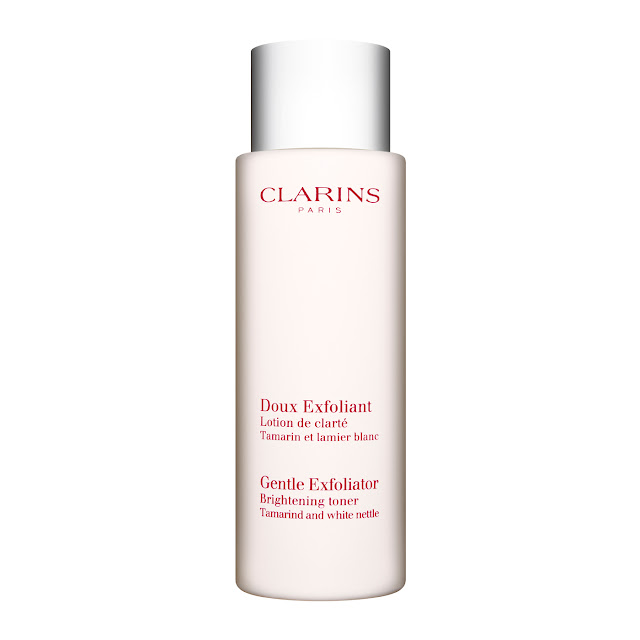So far I have written two posts in this series, the first about cleansing and the second about toning.
In this post I talk about Step 3 - Exfoliating.
For me this is the step that has made the most dramatic change to my skin. Exfoliating fights the signs of aging, keeping the skin smooth, flake free and refreshed. It improves hydration (skin's water retention), reduces wrinkles, stimulates collagen production and firms skin. It can also reduce discolouration from sun damage and the visible marks left after a pimple is gone. Exfoliating preps the skin for Step 4 - Serums.
I favour using acids to exfoliate the skin rather than the physical scrub variety. They feel a bit too rough for me. I'm also not a fan of the Clarisonic system because I found it was too rough for me, even when using the sensitive brush. Surprisingly since I've stopped using it my skin has improved.
There are two types of acids, AHAs (alpha-hydroxy acids) and BHAs (beta-hydroxy acids).
AHAs are great for dryer skins and BHAs are great for oilier ones.
Because my skin is oily, I favour BHAs but I also include AHAs occasionally.
The types of acids that fall into AHAs are:
AHAs work best for those whose chief concerns are sun damage and dry skin, They work to exfoliate primarily the top layers of the skin. The don't cut through oil and are less compatible for those with oily/combination skins.
The acid that falls into the BHA category is salicylic. BHAs work best for oily, acne-prone skin and for treating blackheads, enlarged pores and white bumps. BHAs penetrate the oil that's clogging your pores, and normalises the lining of the pore. BHAs also have an anti-inflammatory and antibacterial action - great for acne or sensitive, reddened skin.
I have lots of different acid products and I like to mix them up. They all have one thing in common, keeping my skin smooth and soft.
Here's what I have and how I use them. They are listed in order of how often I use them.
My most used product is the Paula's Choice Resist Daily Pore-Refining Treatment with 2% BHA. I add a few drops to a cotton pad and apply to my face, neck and chest, morning and night. This is by far my favourite acid product and it is fragrance free. Paula's Choice is available from the Paula's Choice Australia website.
Next is Paula's Choice Skin Perfecting 8% AHA Gel Exfoliant. I use this at night once or twice a week. It is in a gel texture and I apply it to my face, neck and chest.
I use a concentrated BHA once a week at night - Paula's Choice Resist Weekly Retexturizing Foaming Treatment 4% BHA.
The following products are items I am trying to use up.
I love the Alpha-H Liquid Gold. It is a glycolic acid solution. This is best applied once a week after a double cleanse and it is recommended not to put a serum or moisturiser over it, just apply it like that. The following morning my skin is always looking especially refreshed and my pores are visibly smaller. Makeup applies beautifully over this surface. This a great product for dryer skin types but for me it works well. Alpha-H is available from Sephora Australia.
An oldy but a goodie, Clarins Gentle Exfoliator Brightening Toner contains glycolic, salicylic and tartaric acid. It does have a slight fragrance which I'm not a fan of but given the price of Clarins products, I'm using it to the bottom of the bottle.
Caroline Hirons, UK skincare blogger and YouTuber, is a massive fan of Biologique Recherche. Lotion P50V. It contains poly-hydroxy acid, lactic, malic and phytic acids. The V type is especially for aged skin. This product is difficult to source in Australia (I had it shipped to me from a Sydney spa). It stings like hell, makes me go quite red and has a strong vinegar odour. Sounds horrible doesn't it? It's not for the faint-hearted but probably something I bring out once or twice a month. It's powerful stuff.
If there was a range of products that are game changes, these are it. I think that's why people think I look younger than my age. It's because my skin is so smooth and clear of flakes. Exfoliating allow the fresh skin to shine through.
One thing to note is that when you are regularly exfoliating, it is vital that you are applying sunscreen daily and that really goes without saying if you want the condition of your skin to be at its very best. Sunscreen is the key.
Let me know how you go.
Until next time xx



















